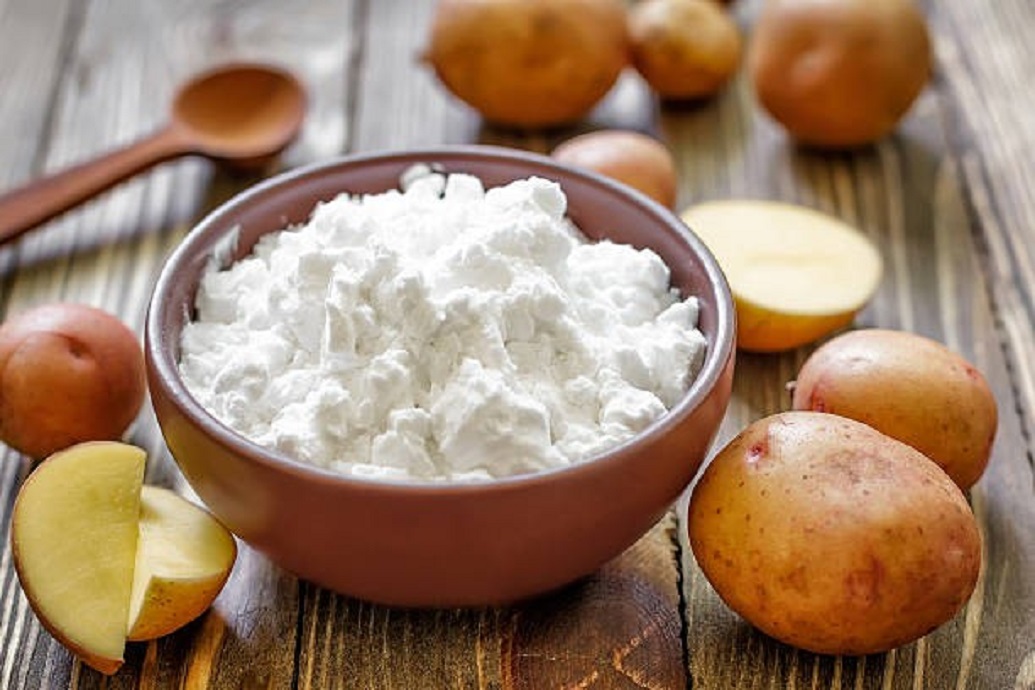Ghee Manufacturing Plant: Detailed Project Report, Raw Materials Requirements

Strong 8k brings an ultra-HD IPTV experience to your living room and your pocket.
Syndicated Analytics' latest report titled “Ghee Manufacturing Plant Project Report 2024 Edition: Industry Analysis (Market Performance, Segments, Price Analysis, Outlook), Detailed Process Flow (Product Overview, Unit Operations, Raw Materials, Quality Assurance), Requirements and Cost (Machinery, Raw Materials, Packaging, Transportation, Utility, Human Resource), Project Economics (Capital Investments, Operating Costs, Profit Projections, Financial Analysis, Revenue), and Investment Opportunities” covers all the aspects including industry performance, key success, and risk factors, manufacturing requirements, project costs, and economics, expected returns on investment, profit margins, etc. required for setting up a ghee manufacturing plant. The study, which is based both on desk research and multiple waves of qualitative primary research, is a must-read for entrepreneurs, investors, researchers, consultants, business strategists, and all those who are planning to foray into the ghee industry in any manner.
What is ghee?
Ghee, often referred to as clarified butter, is a traditional Indian ingredient with a rich history in culinary and medicinal practices, cherished for its nutty flavor, high smoke point, and nutritional benefits. The process of making ghee involves simmering butter to separate the milk solids and water from the fat, resulting in a pure butterfat that is free from lactose and casein. This golden, aromatic fat is not only a staple in Indian cuisine but has also gained international acclaim for its versatility in various dishes, from sautéing and frying to adding richness to sauces and spreads.
The uses of ghee extend beyond cooking, as it plays a significant role in Ayurvedic medicine, where it is prized for its anti-inflammatory properties and considered beneficial for digestion, enhancing the absorption of nutrients and aiding in the healing of the gut lining. Its high content of butyric acid, a short-chain fatty acid, is believed to help maintain intestinal health and has been linked to improved immune function. One of the primary advantages of ghee is its storage stability and high smoke point, which makes it an excellent fat for high-temperature cooking, preventing the formation of free radicals that occur when oils are heated beyond their smoke point.
Request for a Sample Report: https://bit.ly/48olT21
What are the growth prospects and trends in the ghee market?
The global market for ghee is driven by several key factors, such as the increasing consumer preference for natural and traditional food products, coupled with the burgeoning awareness of the health benefits of ghee. Additionally, the rising popularity of ethnic cuisines such as Indian, Middle Eastern, and Southeast Asian cuisines, which extensively use ghee in their culinary preparations, is fueling the market growth further.
Moreover, the expanding food industry's demand for premium and high-quality ingredients is stimulating the market growth as ghee is perceived as a premium dairy product with a rich flavor profile. Furthermore, the growing trend of using ghee as a cooking oil alternative due to its high smoke point and unique flavor is driving market expansion. Apart from this, technological advancements in ghee production processes, such as clarification and packaging, are leading to the development of superior-quality ghee products, driving market growth.
Which aspects are covered in our report on setting up a ghee manufacturing plant?
Market Overview:
- Market Performance
- Regional Insights
- Key Market Segmentation
- Price Trend Analysis
- COVID-19 Impact
- Market Outlook
- Market Key Players Analysis
Manufacturing Operations:
- Product Description and Insights
- Detailed Process Flow
- Identification of Unit Operations Involved
- Mass Balance Analysis and Raw Material Requirements
- Quality Control
Project Requirements, Details, and Costs:
- Site Development, Location, and Land Requirements
- Plant Layout
- Machinery Requirements and Associated Costs
- Raw Material Requirements and Associated Costs
- Packaging Requirements and Associated Costs
- Transportation Requirements and Associated Costs
- Utility Requirements and Associated Costs
- Manpower Requirements and Associated Costs
Project Financial Analysis:
- Capital Investments Analysis
- Operating Costs Analysis
- Expenditure Projections Analysis
- Revenue Projections Analysis
- Taxation and Depreciation Analysis
- Profit Projections Analysis
- Comprehensive Financial Analysis
Browse the Full Report with TOC & List of Figures: https://www.syndicatedanalytics.com/ghee-manufacturing-plant-project-report
Need Customized Project Report?
You can share any particular business requirements that you have, and we will adjust the scope of the report to your needs.The following are some typical customizations that our clients ask for:
- The report may be customized based on the region/country in which you intend to locate your business.
- The production capacity of the facility can be customized in accordance with your needs.
- Suppliers of machinery and prices can be tailored to your requirements.
- Depending on your needs, we may also modify the current scope.
Key Questions Addressed in the Report on Ghee Manufacturing Project:
- How has the performance of the ghee market been thus far, and what can be expected in the upcoming years?
- What is the market segmentation of the global ghee market?
- What is the regional distribution of the global ghee market?
- What are the price trends of various feedstocks in the ghee industry?
- What is the structure of the ghee industry, and who are the major players?
- What are the different unit operations involved in the manufacturing of ghee?
- What is the total land area required for the establishment of a ghee manufacturing plant?
- What is the layout of a ghee manufacturing plant?
- What are the machinery requirements for establishing a ghee manufacturing plant?
- What are the raw material requirements for setting up a ghee manufacturing plant?
- What are the packaging requirements for establishing a ghee manufacturing plant?
- What are the transportation requirements for establishing a ghee manufacturing plant?
- What are the utility requirements for establishing a ghee manufacturing plant?
- What are the human resource requirements for establishing a ghee manufacturing plant?
- What are the infrastructure costs associated with establishing a ghee manufacturing plant?
- What are the capital costs involved in setting up a ghee manufacturing plant?
- What are the operating costs associated with establishing a ghee manufacturing plant?
- What should be the pricing mechanism for the final product?
- What will be the income and expenditures for a ghee manufacturing plant?
- What is the timeframe required to achieve the break-even point?
- What are the profit projections for establishing a ghee manufacturing plant?
- What are the key factors for success and risks in the ghee industry?
- What are the essential regulatory procedures and requirements for establishing a Ghee manufacturing plant?
- What are the necessary certifications required for establishing a ghee manufacturing plant?
Why Choose Syndicated Analytics Reports:
- Our reports offer valuable insights for stakeholders to make informed business decisions and determine the feasibility of a business venture.
- With a vast network of consultants and domain experts in over 100 countries spanning North America, Europe, Asia Pacific, South America, Africa, and the Middle East, we provide in-depth market analysis and competitive intelligence.
- Our extensive database of equipment and raw material suppliers across major continents, combined with our ongoing tracking and updates of costs of land, construction, utilities, and labor across 100+ countries, provide valuable information for decision-making.
- As a trusted business partner to leading corporations, governments, and institutions worldwide, our client list ranges from small and start-up businesses to Fortune 500 companies.
- Our dedicated in-house team of experts, including engineers, statisticians, modeling experts, charted accountants, architects, and more, have a proven track record of building, expanding, and optimizing sustainable manufacturing plants globally.
Browse Other Reports:
Handicraft Manufacturing Plant
Nickel Bromide Manufacturing Plant
Nickel Oxide Manufacturing Plant
Nitrilotriacetic Acid Manufacturing Plant
About Us: Syndicated Analytics, a subsidiary of IMARC Group, offers consulting services and provides comprehensive market intelligence in the form of research reports, production cost reports, and feasibility studies. Our team, consisting of experienced researchers and analysts from diverse industries, is deeply committed to the quality of the information and insights delivered to the clients, which range from small and medium enterprises to Fortune 1000 companies. These firms are able to achieve this by studying the qualitative and quantitative aspects of the market as well as staying up to date with the current and evolving trends of the industry.
Contact Info:
Katherine Shields
Senior Sales & Marketing Manager
134 N 4th St. Brooklyn
NY 11249, USA
Phone No.: +1-213-316-7435
Website: https://www.syndicatedanalytics.com/
Email Address: [email protected]
Note: IndiBlogHub features both user-submitted and editorial content. We do not verify third-party contributions. Read our Disclaimer and Privacy Policyfor details.







